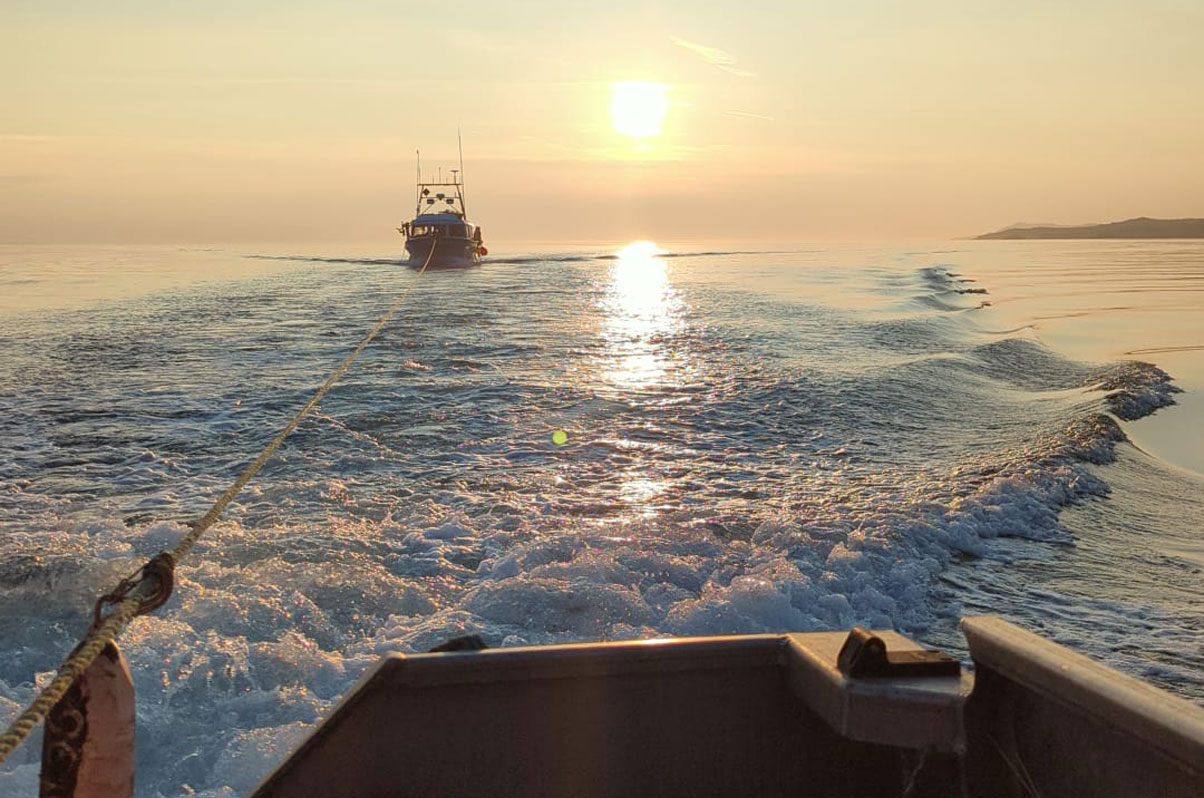
C-Tow Captains Melissa Curtis, Pasha Barlak, and Owen Barlak complete the most extensive direct tow managing tides, currents, and unforeseen marine conditions from Sointula, BC to Richmond.
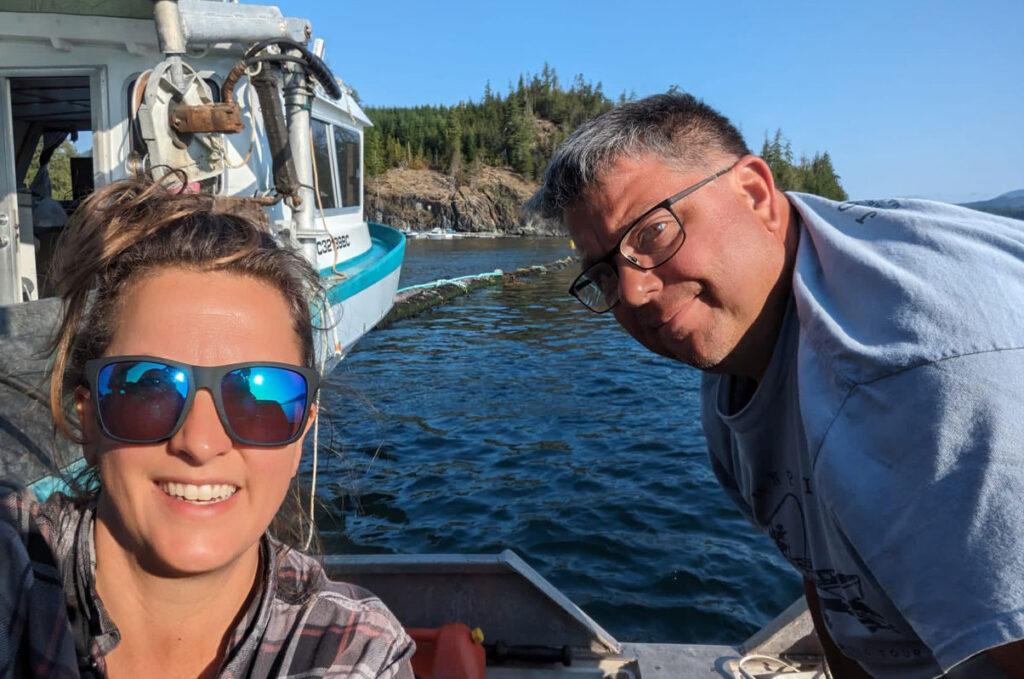
From where we are based in Central Vancouver Island, particularly Comox and the Broughton Archipelago, we receive a variety of different calls. Like all of the C-Tow Captains in its fleet, we respond to them immediately and complete them successfully.
About two months ago, we received a call from an owner of a 37-foot commercial crabbing vessel, explaining it sustained extensive bottom damage and also required a new engine. At the time, it was being repaired at a boatyard in Sointula on Malcolm Island, which is where our C-Tow service boat is based.
He explained that once the hull work was completed, the vessel needed to be towed to a boatyard in Richmond where the engine would be replaced. He asked if we could tow it directly – without its power – 200 nautical miles (NM) from Sointula down to the Fraser River with our 24’ Commercial Tow Vessel. We accepted.
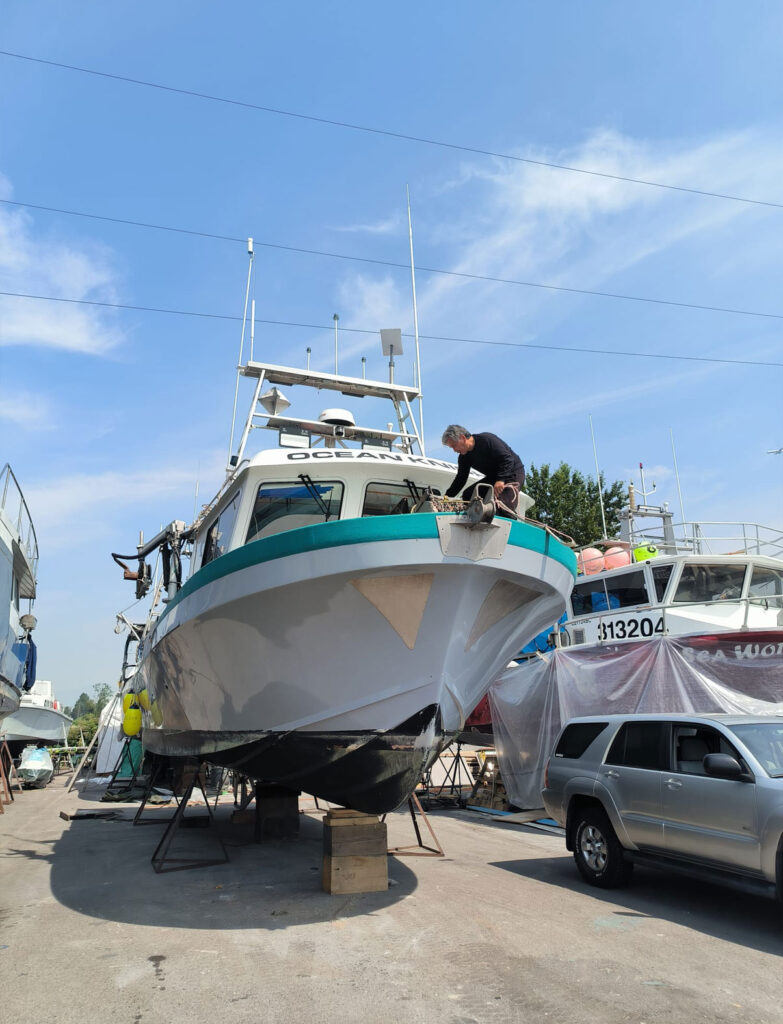
The Trip and Tow Plans
After the fibreglass work was finished on the crabber, a date was set for late June. Planning a tow this far and for the time we scheduled, takes very detailed planning.
To be as efficient as possible, the crew and our team set up the crabber as a bunker barge with large tanks of diesel onboard and the required hoses, fittings, and a fuel transfer pump so we could refuel on the fly. This was one of the biggest advantages to set the 200 NM record in 36 hours as we could practically tow non-stop.
We also decided to refuel when the gauge was reading a half-a-tank and in calm areas while tied off the vessel’s hip. Otherwise, it would be impossible to refuel in rough conditions.
With three of us onboard, we planned to take shifts manning the helm, keeping watch and sleeping in the towboats berth. Nevertheless, two people were always awake and alert at the helm while one person slept. In all, we averaged six hours of sleep per day during the 36-hour tow.
Most importantly, we coordinated the time and distance by the tides, currents and of course, the marine forecast. In fact, unexpected, strong winds delayed the tow by a few days.
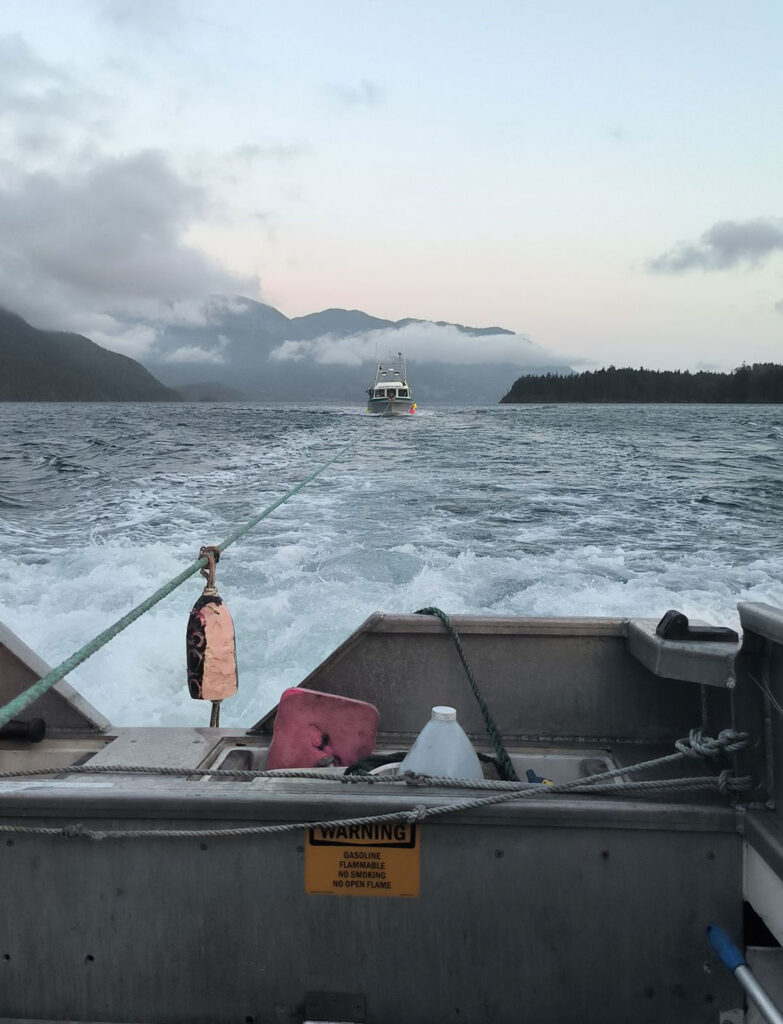
The Tow, The Tides, and a Rough Strait of Georgia
We finally departed Sointula on July 5 at 9:00 p.m. with clear and calm conditions, towing the crabber across Broughton Strait to Port McNeill and picking up the crew who would be on the towed vessel.By leaving when we did, at an average speed of 7 knots, we successfully navigated south on Johnstone Strait and made Kelsey Bay in the early morning on July 6.
Although the wind picked up, it could’ve been much worse later in the day as winds are known to get as strong as 25-30 knots. Plus, when the tide flows against the wind, water conditions become very rough and are not easy to manage, especially with a powerless 37-foot crabbing vessel on a towline.
We navigated down Discovery Passage to Seymour Narrows, where we had to wait 1.5 hours for the slack tide. At this point, we decided to refuel and when the tide and currents settled, we towed through the narrows against 3.5 knots. Actually, over the course of 12 hours, the current in the narrows changed from 11 knots one way to 14 knots the other!
Nonetheless, we timed the tide and current perfectly. We ran about 10 knots for about 1.5 hours through the south end of the narrows before passing Campbell River and Cape Mudge. We had a really good push. What also helped was the reduced weight and drag of the crabbing vessel since it didn’t have an engine or a drive to bog it down.
We towed steadily and safely all the way to Sabine Channel (between Texada and Lasqueti islands) with great weather. As the sun was setting, we refuelled before heading into the Strait of Georgia after dark, which is when the seas started to get really rough with intense conditions all the way to the Fraser River.
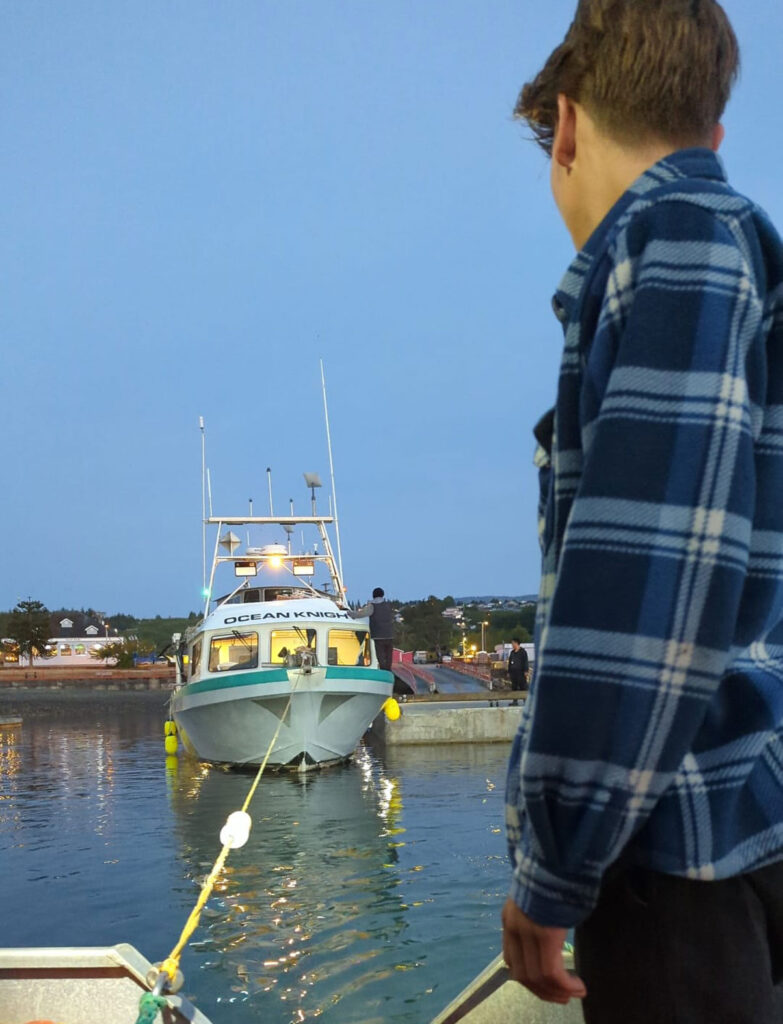
Reaching the Fraser and Completing an Amazing Feat
Navigating up the Fraser River was a new experience for us. However, we gained some insightful advice from a local C-Tow Captain in Steveston prior to our tow. While also knowing he could provide support as a second vessel if needed, we were grateful for his knowledge of the area and gave us a feeling of reassurance.
The conditions were rough with a steady flow of commercial marine traffic, but we successfully finished the final 15 NM up the Fraser to Shelter Island Marina & Boatyard where we landed the 37-foot crabber safely and successfully.
After setting a 36-hour, 200 NM towing record for C-Tow, we were feeling very celebratory yet we were exhausted! After long showers at the marina and spending some time in Richmond, we switched out our tow props for our high-performance props on our Volvo drive and happily cruised 25 knots from the river to the Strait of Georgia, homebound. Looking back on the successful tow, a real high point was the return home as a family, feeling triumphant of setting a record, and ensuring the vessel was delivered safely.
While on the Georgia Strait, we welcomed the calm conditions and bright sunshine. We had a great meal, turned on the music and just enjoyed what we coined our ‘family summer vacation.’ It was just one of those moments that we work so hard for and don’t get to enjoy often enough.
The rest of the return trip went as smoothly as we could have hoped. We cruised up the Lambert Channel (between Denman and Hornby islands) and eventually crossed the Comox bar into Comox. Afterwards, we trailered the boat on Hwy 19 to Port McNeill before crossing the Broughton Strait back to our home port of Sointula.
